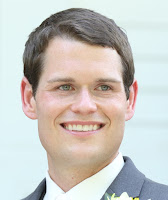 |
| Students relax but focus while taking notes. |
Finnish Classroom 360 - Spherical Image - RICOH THETA
360-image of a 6th grade classroom
 |
| Students conduct experiments at the University of Helsinki's, LUMA Center. |
Below is a snapshot of the Finnish education system. As you can see, there are no “dead ends.” After 9th grade, students gets to choose their path. This choice is not a one-time deal. Students can change plans and many educational programs “cross” school lines which keeps their options open. Students have the opportunity to pursue their interests and develop the skills they desire.
Eija Kauppinen, Counsellor for Education, Finnish National Agency for Education, Fulbright Distinguished Awards in Teaching 2010-2011
During 9th grade, students apply for upper secondary schools if they wish to continue their formal education. Upper secondary education is typically three years, but students have the option to complete their degree in four years. Most students graduate at the age of 19 since they begin school a year later in Finland compared to the U.S.
While most schools in Finland are public institutions, some have programs or reputations that appeal to students with certain interests. For example, there are high schools (lukios) that specialize in art, music, dance, or media to name a few. Therefore, some schools are quite competitive to get into. However, if students are not accepted to their top choice, there is no need to fret. Students realize that generally speaking, all schools in Finland are equal in terms of quality and resources. Students know they will receive a good education at any school.
 |
| Helsinki Vocational College specialize in audiovisual training. Programs include photography, video production, 3D design, and video game development. |
Basic Education
Grades 1-9 in Finland are obligatory and comprise what is known as “Basic Education.” Students generally begin first grade at age 7 and complete ninth grade at age 15.
Lower Secondary (Grades 7-9)
Normally, lower secondary education (yläaste) (think junior high or middle school) is situated in a separate building from lukio and primary grades. Two other Fulbright Teachers and I had the opportunity to visit a junior high school together. Birger Holm, principal of Espoonlahti School, organized a tour that showed us all the great things happening in middle grades.
Since I am an elementary school librarian, it only makes sense that the majority of my classroom visits were at primary schools (ala-aste). For many of these grade levels, students have a classroom teacher who teaches multiple subjects. Students sometimes switch teachers for special classes like wood-working or music. In most schools, students get a 15-minute break after each 45-minute lesson in addition to a scheduled recess period. In some classrooms I have visited, students claim to never have homework. Students from other classrooms claim they have 30 minutes of homework each night. In some classrooms, students are allowed to complete assignments in the hall or in flexible seating options. In other classrooms, students have assigned seats. There is no one-size-fits-all for how education works in Finland. It varies. This is expected given different student populations and various teaching styles. So, instead of me explaining Finnish education in general, I will show you what I know based on personal observations.
 |
| Many schools are early adopters of new educational technologies like virtual reality, 3D printing, and interactive projectors. |
 |
| In most schools you will find flexible seating options. |
 |
| This 7th grade class is finalizing their Lego League project which they later presented to a panel of judges at a local competition. |
 |
| Before high school, all students take a textile class as seen in the bottom left picture. |
 |
| Helsinki English School had a phenomenon learning week where activities and projects revolved around the theme: "time." These 1st and 2nd graders are creating their own grandfather clocks. |
 |
| This 6th grade class is conducting research on a country they would most like to visit. Students analyze maps, create a travel guide, and explore the destination using a virtual reality headset. |
Even though the Finnish education system is consistently ranked at the top of international educational benchmarks—despite minimal homework regimens and no standardized tests, apart from a nationwide matriculation examination for students when they are around 17—the curriculum has been tweaked further to keep it relevant (Source—Straits Times).
One of the major components of Finland’s new curriculum are transversal competences. Study, working life, and active citizenship require a command of different knowledge and skills as well as competences in combining these. Each subject promotes transversal competence skills. When you speak with Finnish teachers, the conversation tends to always lead to students’ overall well-being.
There is so much to say about my schools visits in Finland that I could write a book. Hey! Now, that's an idea!
So, what’s next? What am I going to do with these pages of notes and ideas swirling around in my brain? Well, I have used my observations to develop my final Fulbright Inquiry Project—a website for how to integrate project/phenomenon-based learning that will launch soon. I might not be able to detail every single school visit these past four months in one blog post. But I can share more about my classroom observations via my website. The site has a blog section where I have and will continue to add articles that highlight specific aspects of what I have learned in Finland. Stay tuned for the release of my online toolkit!











